Uraeus – Sacred Emblem That Symbolized Sovereignty, Royalty, Deity And Divine Authority In The Land Of Pharaohs
A. Sutherland - AncientPages.com - The king wore the Uraeus on a wreath or on his crown during the Middle Kingdom. It symbolized legitimacy to the ruler and was represented by a rearing cobra with an inflated hood.
It is also of great importance to certain symbols how they are placed. Therefore, the vertical positioning and higher elevation of the emblem – in this case, that of Uraeus, means - spiritual superiority.
Uraeus on the forehead of Tutankhamun's mask. (Yippie~commonswiki - Photo: Erik Hooymans - CC BY-SA 2.5
Generally, the emblem of Uraeus (from the Greek: 'Ouraios - at its end"), is a stylized, simple form of the Egyptian cobra, symbolizing sovereignty, royalty, deity, and divine authority in Ancient Egypt.
The Pharaohs wore it as a head ornament: either with the body of the goddess Wadjet on top of the head or as a crown encircling the head. It indicated the protection of Wadjet and strengthened the pharaoh's claim to the country. While placed on the Pharaoh's head, the Uraeus was part of the ruler's crown.
The Uraeus of Egyptian rulers, positioned on the forehead, expressed the spiritualization of the inner force, the importance of which is significant in Tantrist Yoga.
As worn on the head, this powerful object dates back to the tradition of the tribes in ancient Libya. Still, in ancient Egypt, the Uraeus's power focused on the Pharao, giving him protection.
In myths, the snake had many associations with great mythological symbols like the Eye of Ra, the Eye of Horus, and the crown of Lower Egypt. Its importance is associated with the Sun God, Ra, and its omnipotence. The emblem was Ra's guardian, always ready to spit poison at his enemies.
Uraeus And Close Associations With Goddesses
The Uraeus was also associated with Hathor, Bastet, Sakhmet, Tefnut, and sometimes Nekhbet of Upper Egypt, which we know as the vulture goddess usually depicted as a cobra.
The Uraeus was a hieroglyphic sign for "Goddess," derived from the Serpent Mother, one of Egypt's oldest deities, known as Uatchet, Uachit, or Ua Zit. The Greeks recognized her as Buto ('the Green One') due to her connection to the sacred city Per Uto. Uto was the patron goddess of Lower Egypt and the counterpart of the Upper-Egyptian goddess Nekhbet.
Amenhotep II Uraeus from KV35, East Valley of the Kings, Luxor, Egypt. Credit: Public Domain
And again, Uto and the vulture Goddess Nekhbet represented cycles of birth and death and beginning and ending.
The goddess Wadjet, one of the earliest Egyptian deities who protected Lower Egypt was depicted as a 'Cobra-Uraeus,' and also, Isis gained the throne of Egypt for her husband, Osiris with this sacred emblem.
Without any doubt, the Uraeus symbolizes the raised serpent. It's worth noting that the Kundalini is often depicted as a serpent that is the universal symbol of strength transformed into spirit or an aspect of power.
Juan Eduardo Cirlot Laporta, Spanish poet, art critic, and mythologist, wrote that Carl Gustav Jung (1875 – 1961) suggested that the Egyptian Uraeus is the visible expression of the Kundalini on a higher plane.
The Uraeus is the most precious ornament of the royal headdress, and its use as a royal symbol dates back to the most ancient representations of the ruler in ancient Egypt. Although it is not displayed on every image of a pharaoh, especially in Egypt's early dynasties, it remains omnipresent until Roman times.
The Uraeus's appearance changed with time. Its markings and design varied considerably during the three thousand years of use in the Land of the Pharaohs.
However, the emblem's primary form of an erect cobra with an extended hood never changed or was modified.
It was often worn on the foreheads of deities and rulers in the position of the "third eye" of insight, and thus, it stood for royal spirit, healing, and wisdom.
Written by – A. Sutherland - AncientPages.com Senior Staff Writer
Copyright © AncientPages.com All rights reserved. This material may not be published, broadcast, rewritten or redistributed in whole or part without the express written permission of AncientPages.com
Expand for referencesReferences:
Cirlot, J. E.. A Dictionary of Symbols
Walker, Barbara G. The Woman's Dictionary of Symbols and Sacred Objects
Nozedar, Adele. The Element Encyclopedia of Secret Signs and Symbols
More From Ancient Pages
-
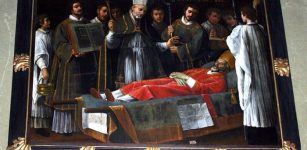 On This Day In History: Archbishop Thomas Becket Murdered – On Dec 29, 1170
News | Nov 29, 2016
On This Day In History: Archbishop Thomas Becket Murdered – On Dec 29, 1170
News | Nov 29, 2016 -
 Enigmatic Bronze Age Fulacht Fiadh: ‘Kitchens’ Of The Legendary Irish Warriors
Civilizations | Nov 26, 2018
Enigmatic Bronze Age Fulacht Fiadh: ‘Kitchens’ Of The Legendary Irish Warriors
Civilizations | Nov 26, 2018 -
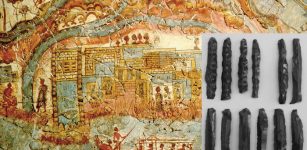 Analysis Of Ancient Tools Challenges Long-Held Ideas About What Drove Major Changes In Ancient Greek Society
Archaeology | Aug 23, 2022
Analysis Of Ancient Tools Challenges Long-Held Ideas About What Drove Major Changes In Ancient Greek Society
Archaeology | Aug 23, 2022 -
 2,000-Year-Old Roman Sandal With Nails Found In Germany
Archaeology | Jun 28, 2024
2,000-Year-Old Roman Sandal With Nails Found In Germany
Archaeology | Jun 28, 2024 -
 Vimanas – Flying Machines Soaring Through Ancient Sky Of India
Ancient Mysteries | May 27, 2014
Vimanas – Flying Machines Soaring Through Ancient Sky Of India
Ancient Mysteries | May 27, 2014 -
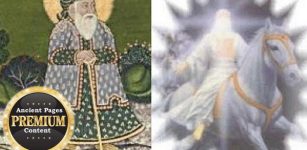 Mystery Of Hizir – One Of The Most Enigmatic And Extraordinary Ancient People
Ancient Mysteries | Oct 16, 2018
Mystery Of Hizir – One Of The Most Enigmatic And Extraordinary Ancient People
Ancient Mysteries | Oct 16, 2018 -
 Puzzling Runic Inscription Dated To 1050-1500 AD Unearthed In Oslo, Norway
Archaeology | Dec 13, 2017
Puzzling Runic Inscription Dated To 1050-1500 AD Unearthed In Oslo, Norway
Archaeology | Dec 13, 2017 -
 Ancient Stone Cylinders Shed New Light On The Invention Of Writing In Mesopotamia
Artifacts | Nov 6, 2024
Ancient Stone Cylinders Shed New Light On The Invention Of Writing In Mesopotamia
Artifacts | Nov 6, 2024 -
 DNA Sheds New Light On The Mysterious Dead Sea Scrolls
Archaeology | Jun 2, 2020
DNA Sheds New Light On The Mysterious Dead Sea Scrolls
Archaeology | Jun 2, 2020 -
 10 Remarkable Jain Temples – Marvelous Ancient Architecture And Stone Carvings
Featured Stories | Dec 17, 2015
10 Remarkable Jain Temples – Marvelous Ancient Architecture And Stone Carvings
Featured Stories | Dec 17, 2015 -
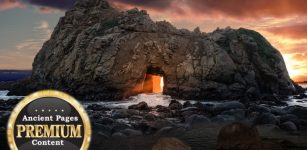 Unexplained Mystery Of The Untraceable Stone-Throwers – Strangeness In Australia And New Zealand – Part 2
Featured Stories | Nov 13, 2019
Unexplained Mystery Of The Untraceable Stone-Throwers – Strangeness In Australia And New Zealand – Part 2
Featured Stories | Nov 13, 2019 -
 A 1,000-Year-Old Intact Mummy Unearthed In Ancient Pachacamac Site, Peru
Archaeology | May 31, 2018
A 1,000-Year-Old Intact Mummy Unearthed In Ancient Pachacamac Site, Peru
Archaeology | May 31, 2018 -
 Early Humans Were Probably Driven To Extinction By Climate Change- Study Suggests
Civilizations | Oct 15, 2020
Early Humans Were Probably Driven To Extinction By Climate Change- Study Suggests
Civilizations | Oct 15, 2020 -
 Incredibly Rare 3,500-Year-Old Wooden Spade Found In English Trench
Artifacts | Oct 30, 2024
Incredibly Rare 3,500-Year-Old Wooden Spade Found In English Trench
Artifacts | Oct 30, 2024 -
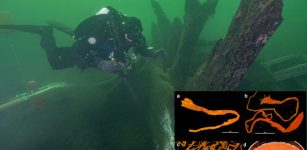 Treasure Trove Of Spices Found On The Sunken Medieval Ship Gribshunden
Archaeology | Feb 11, 2023
Treasure Trove Of Spices Found On The Sunken Medieval Ship Gribshunden
Archaeology | Feb 11, 2023 -
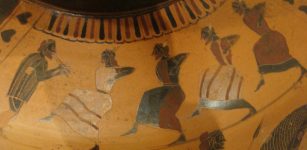 Dance Was A Gift Of The Gods To Ancient Greeks
Featured Stories | Oct 4, 2021
Dance Was A Gift Of The Gods To Ancient Greeks
Featured Stories | Oct 4, 2021 -
 12 Alchemy Symbols Explained
Ancient Symbols | Aug 20, 2018
12 Alchemy Symbols Explained
Ancient Symbols | Aug 20, 2018 -
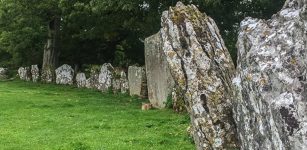 ‘Lios na Grainsi’ – Ireland’s Largest Stone Circle
Civilizations | Feb 3, 2016
‘Lios na Grainsi’ – Ireland’s Largest Stone Circle
Civilizations | Feb 3, 2016 -
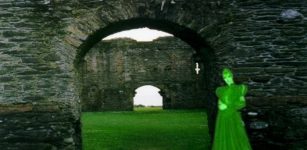 Enigmatic Green Lady In British Folklore
Featured Stories | Jan 9, 2017
Enigmatic Green Lady In British Folklore
Featured Stories | Jan 9, 2017 -
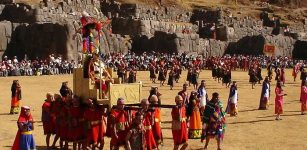 What Was Inti Raymi And Why Was It Celebrated By Inca?
Ancient History Facts | Dec 16, 2017
What Was Inti Raymi And Why Was It Celebrated By Inca?
Ancient History Facts | Dec 16, 2017


